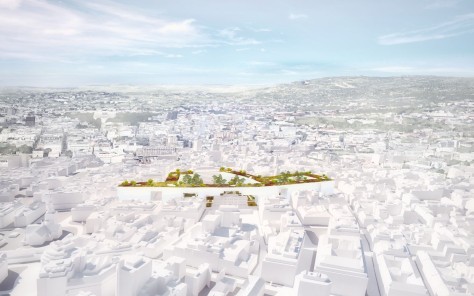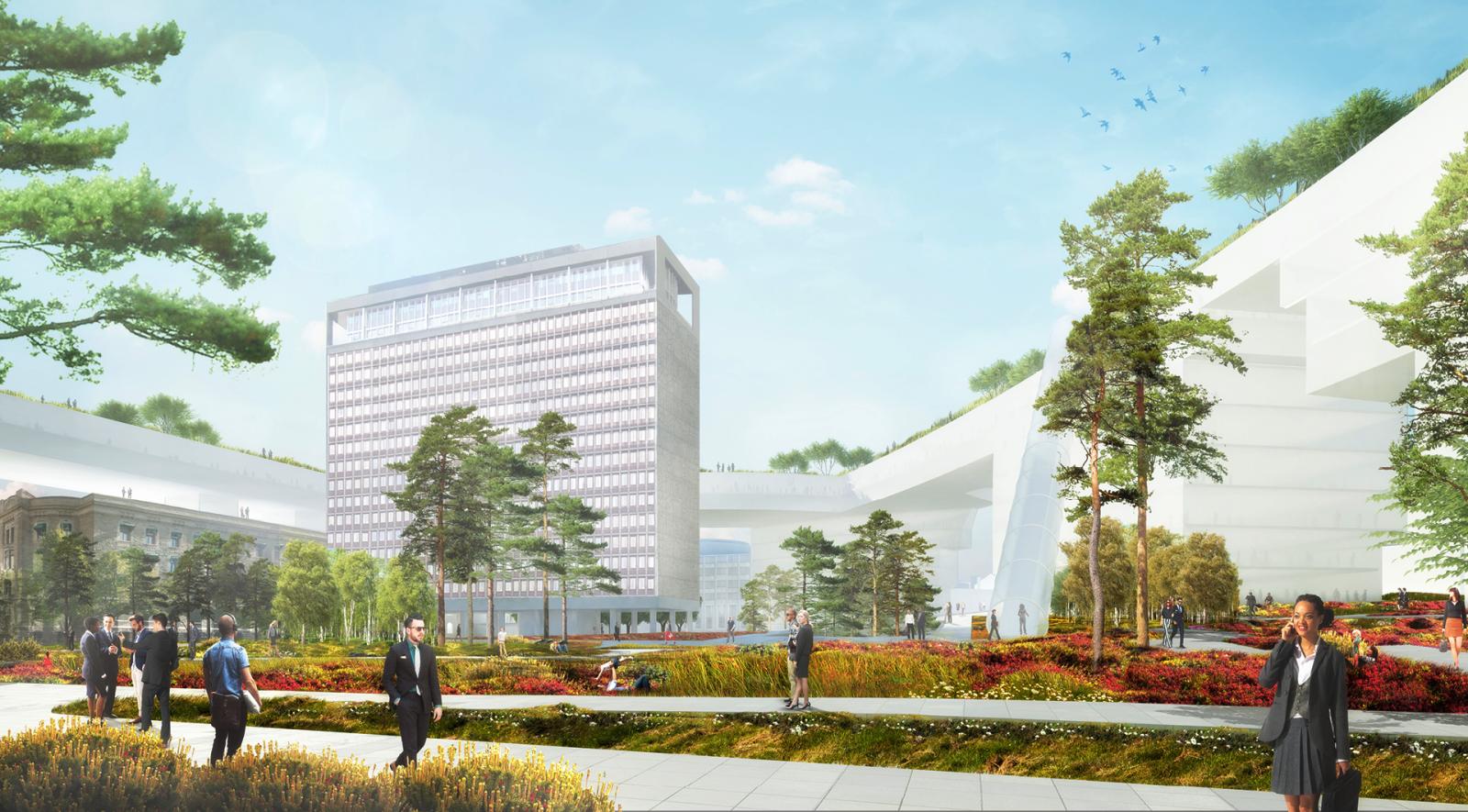
What features define Norwegian identity today? What changes will Norway face in the coming century? What type of building complex and which kind of architecture respond best to the future expectations of a physical framework for democracy? With these questions and many more, MVRDV began the process of developing a vision for the future of Oslo’s government quarter, the Regjeringskvartal (RKV), and its expansion to include 200.400 m2 of offices and public spaces.

The choice of one concentrated government center that collects all of the vast ministries together, under one roof so to speak, is a powerful idea. Such a move allows for organizational flexibility over time, and creates sense of interaction rather than separation. Identity is something that is constantly developing, but is essential to pinpoint architecture in a historical perspective. What does it mean to be Norwegian, and should the future RKV express a desired identity or be more neutral in relation to these issues?

Oslo is Europe’s fastest growing capital city and it is currently undergoing the most significant and controversial changes to its built environment since the 1600s. MVRDV’s analysis of the site, brief and program led to number of different conclusions, which together formed the basis for defining the task: the desire for a representative, green public space and a “cluster’ of buildings which can become an integral part of the surrounding district, with good physical connections to the surroundings and access from all sides.

The working environment should be friendly and efficient. And, security must be provided without the building becoming a fortification. What type of organization creates an optimum working environment? Experts suggest that a horizontal organization of workplaces, with larger horizontal floor surfaces, provide more room for cooperation than a conventional, vertical subdivision, as in a tower building.

Can a complex then be created that is as “horizontally” as possible? The best workplaces also maximise natural daylight and ventilation, and views of surrounding streets or green areas is an important ingredient. MVRDV’s proposal creates a ring of offices in a lowrise, horizontal format, which respects the surrounding historic city centre while creating an ideal working environment.

The new government quarter aims to connect, rather than separate, with its grand bridges spanning mulitiple buildings and creating a network effect which improves collaboration and communication between government departments. Inside the ring, a huge new urban garden is created. The employees have views onto the garden, which will be planted with species from the Norwegian landscape such as conifers and heather, and mosses and lichens.

The garden can become a symbol of Norway’s democracy and its government. A symbol for a country for whom nature is a most exceptional characteristic, as well as being the source of much of its wealth. The first phase of this parallel assignment, created by Statsbygg, the Norwegian governments key advisor in construction and property, has now been completed. Source by MVRDV.

Location: Oslo, Norway
Architect: MVRDV
Project Team: Winy Maas, Jacob van Rijs and Nathalie de Vries
(competition phase) with Jeroen Zuidgeest, Klaas Hofman, Luca Moscelli, Jack Penford Baker, Mark van den Ouden, Elien Deceuninck, Hannah Knudsen, Antonio Luca Coco, Carlo Cattó
Co-architect: SAAHA, Oslo
SAAHA Team: Adnan Harambasic, Thor Olav Solbjør, Tamara Baresic, Florian Müller, Aasmund Vinje, Fernando Borruel
Landscape/Traffic: Lala Tøyen, Oslo
Lala Tøyen Team: Iwan Thomson, Olav Kvalnes, Pernille Heilmann Lien, Stine Bjar, Francesco Sabaini, Kari Tønseth
Security: migrant Øystein Grønning, Steven Eames (Hudson Sterling Ltd. London UK)
Workspaces: IARK Heidi Tolo, Synne Bersvendsen
Art Consultancy: HOVIND, Anne Beater Hovind
Traffic: DOF,Gaute Mo, Mario Rando
Client: Statsbygg
Area: 200.000 m2
Year: 2015
Images: Courtesy of MVRDV

